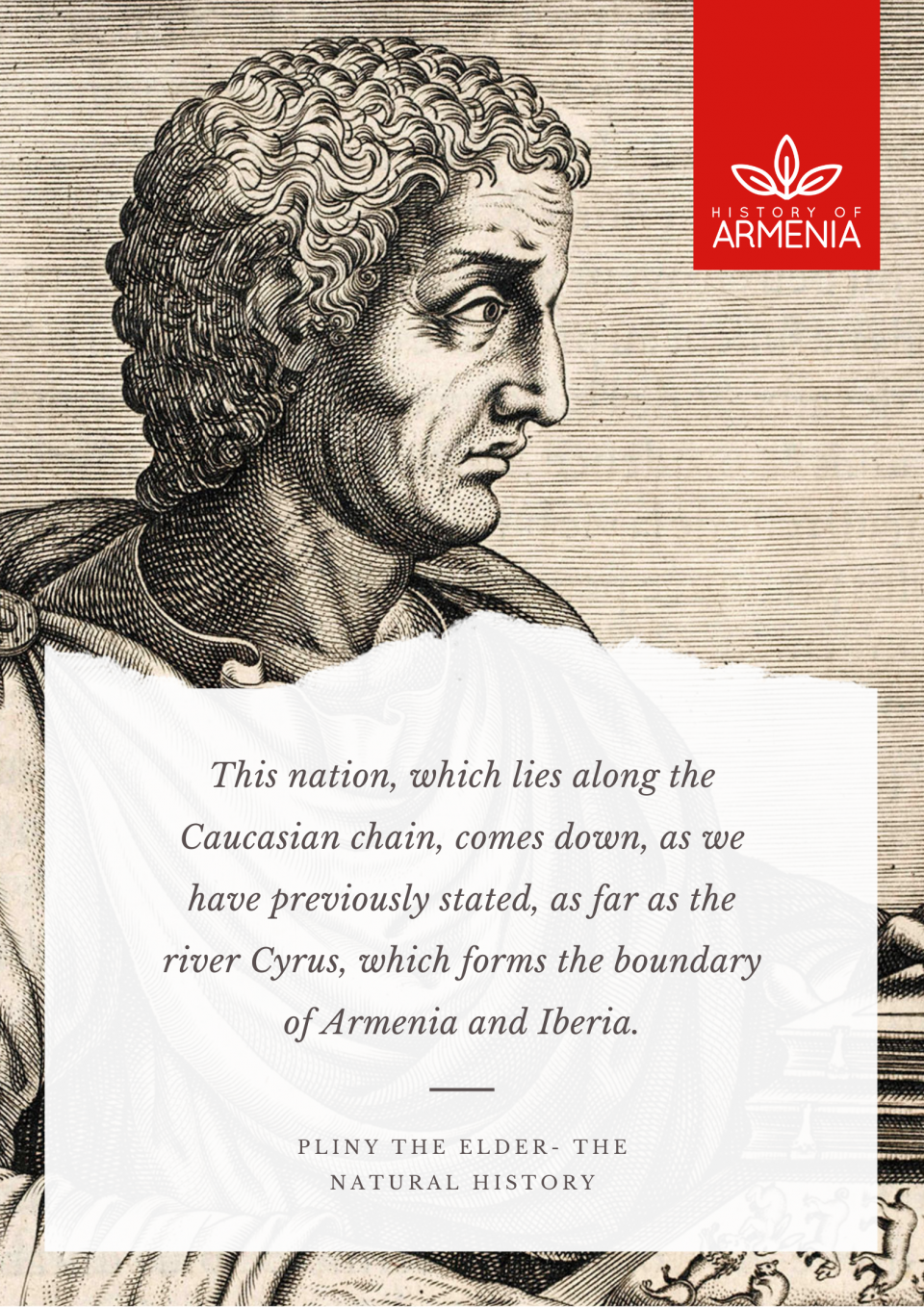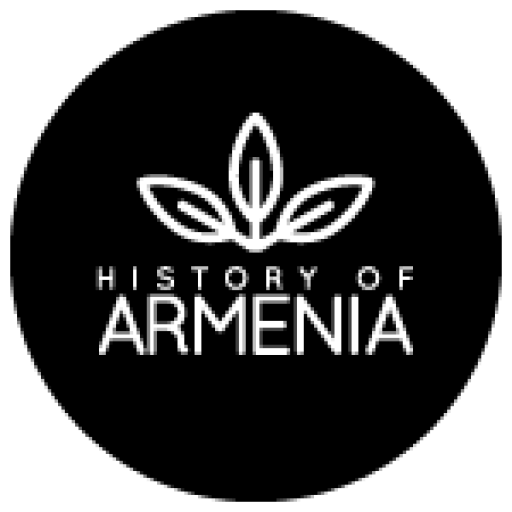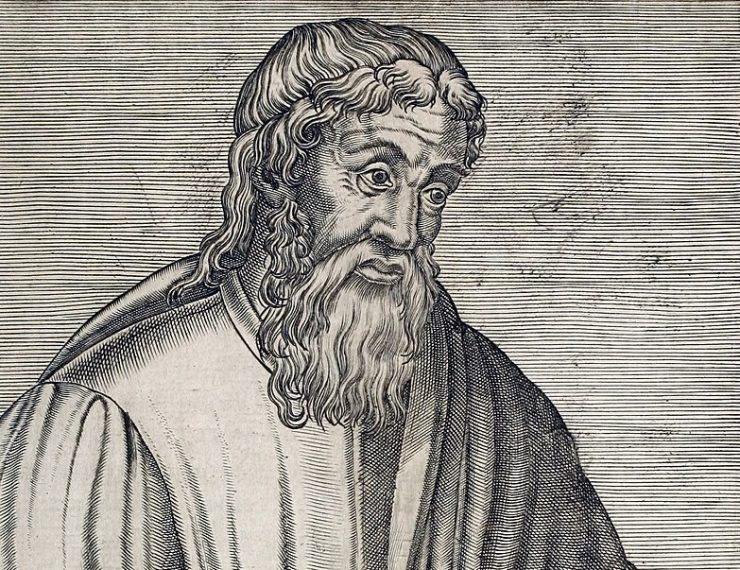Armenian settlements and a distinct political entity have existed in Artsakh since the second century BC. Ancient Greek and Roman historians, including Pliny the Elder, Plutarch, Ptolemy and Dio Cassius stated in their writings that Armenia’s eastern border with the neighboring region of Caucasian Aluania (Aghvank) was separated by the River Kur, engulfing Artsakh in Armenia. Hereby provided a summary of these ancient sources regarding Artsakh.
Strabo, Greek geographer, historian and philosopher – 7c. BC

‘In Armenia itself there are many mountains and many plateaus, in which not even the vine can easily grow; and also many valleys, some only moderately fertile, others very fertile, for instance, the Araxene Plain, through which the Araxes River flows to the extremities of Albania and then empties into the Caspian Sea. After these come Sacasenê, this too bordering on Albania and the Cyrus River; and then comes Gogarenê. Indeed, the whole of this country abounds in fruits and cultivated trees and evergreens, and even bears the olive. There is also Phauenê,a province of Armenia, and Comisenê, and Orchistenê, which last furnishes the most cavalry.’
Strabo – Geographica
Pliny the Elder, Roman author, naturalist and natural philosopher, naval and army commander of the early Roman Empire – 23/24 – 79 AD

Pliny the Elder, states that Armenia’s eastern border with the neighboring region of Caucasian Aluania (Aghvank) was separated by the River Kur (river Cyrus). This means that the Armenian border includes the region of Artsakh in Armenia.
This nation, which lies along the Caucasian chain, comes down, as we have previously stated, as far as the river Cyrus, which forms the boundary of Armenia and Iberia. Above the maritime coast of Albania and the nation of the Udini, the Sarmatæ, the Utidorsi, and the Aroteres stretch along its shores, and in their rear the Sauromatian Amazons, already spoken of.
Pliny the Elder. Natural History of Pliny (VI).
Plutarch, Greek Middle Platonist philosopher, biographer, essayist, and priest at the Temple of Apollo – c. 46 AD

Plutarch wrote that Tigranocerta, one of the capital cities of Armenia, built by Tigran the great, located in what is now Artsakh was “a rich and beautiful city where every common man and every man of rank studied to adorn it”.
The city was also full of wealth and votive offerings, since every private person and every prince vied with the king in contributing to its increase and adornment.
Upon this, Tigranes abandoned Tigranocerta, that great city which he had built, withdrew to the Taurus, and there began collecting his forces from every quarter. Lucullus, however, gave him no time for preparation, but sent out Murena to harass and cut off the forces gathering to join Tigranes, and Sextilius again to hold in check a large body of Arabs which was drawing near the king.
Plutarch – The Parallel Lives
Claudius Ptolemy – Roman astronomer, geographer, mathematician and astrologer – 2nd c. AD

Claudius Ptolemaeus was a Roman citizen of Macedonian descent living and working in Alexandria, Egypt in the second quarter of the first century A.D. Ptolemy was a geographer, mathematician, astronomer and poet, whose works resonated for many centuries. In the map above you will find a map of the world by Ptolemy in which Armenia is shown including the region of Artsakh.
Dio Cassius, Roman statesman and historian of Greek and Roman origin – c. 155 – c. 235 AD

In his book Roman History, Cassius Dio describes the epic conquest of Armenia by Lucius Lucullus and his battle in Tigranakert located in Artsakh against the Armenian emperor Tigrannes the great.
Nevertheless he did seize Tigranocerta when the foreigners living in the city revolted against the Armenians; for the most of them were Cilicians who had once been carried off from their own land, and these let in the Romans during the night.
Cassius Dio – Roman History
Sources:
- Pliny the Elder. Natural History of Pliny
- Plutarch. Lives
- Ptolemy. The Geography.
- Dio [Cassius]. Roman History

